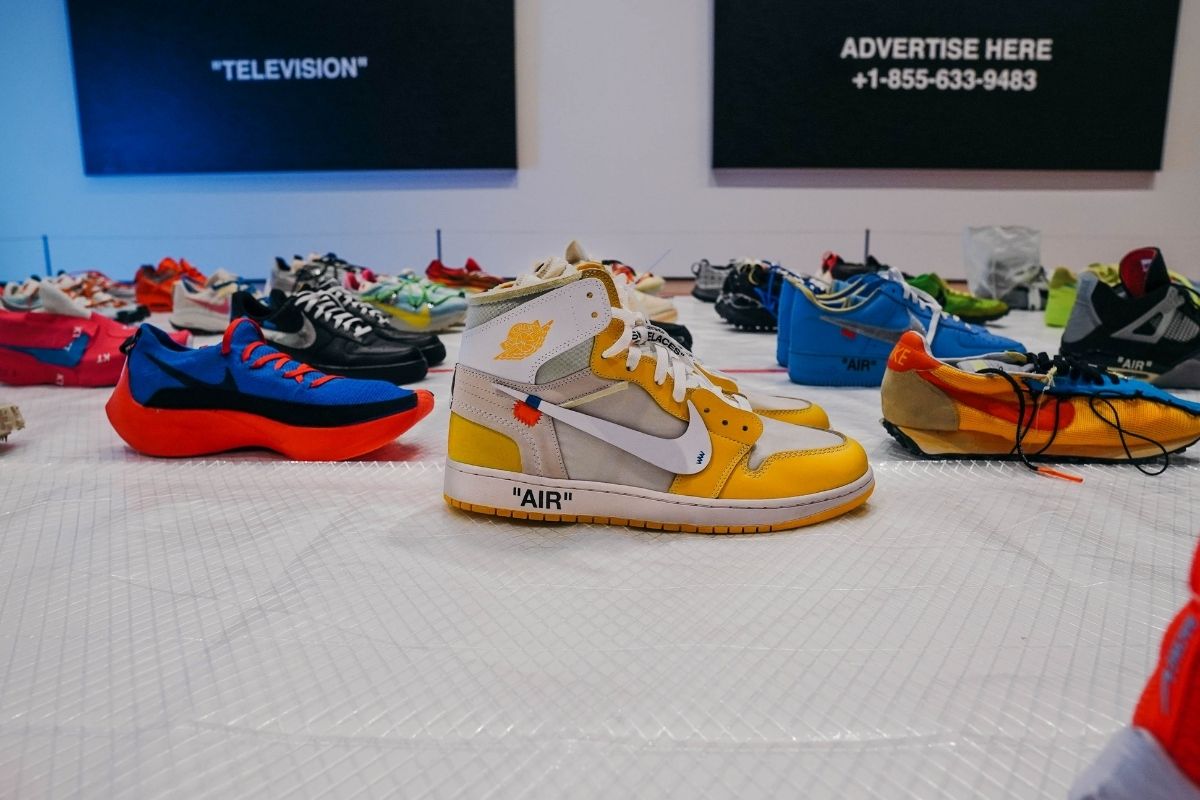Online Sneaker Education: Copyrighting Your Sneaker Designs

“A lot of people get copyright and trademarks mixed up,” says sneaker industry professional Kenneth Anand. What is a copyright? A copyright protects an original work of authorship. “Original works of authorship” can include, but are not limited to, architecture, graphics, pictures, sculptures, works of literature, or other types of artistic work.
Examples of Copyrights
Jay-Z would have a copyright on the lyrics that he writes for his songs. He would also have a copyright on the songs themselves, as they are fixed in MP3 or CD format. Artist Daniel Arcam would have a copyright over his paintings, unique Pokemon, and eroded DeLorean sculptures.
Writer George R. R. Martin would have a copyright over his books for “Game of Thrones” and the screenplay for the HBO TV series “Game of Thrones.” These are various examples of the types of copyrights that you can have.
Benefits of Copyrights
“One of the main goals of copyrights is to allow the inventor the ability to reap the benefits of creating the work,” Kenneth Anand explains. This means that whoever owns a copyright has the exclusive right to reproduce, publish, promote, and sell their works of art. In order to obtain a copyright, the work must be fixed in a tangible form. You cannot get a copyright for just an idea.
Obtaining a Copyright
In order to obtain a copyright, your work must follow three basic requirements. First, the work must be original, meaning it must be independently created rather than a copy of something else already existing. Second, it must be creative, meaning that there must be some minimum basis of creativity for the work. Finally, it has to be fixed. Copyrights cannot be ideas or things made up out of your imagination. Instead, they must be fixed in some tangible form. If a work has all three of these elements – original, creative, and fixed – you can obtain a copyright for it.
What types of works can you copyright? As said before, a copyright protects works of authorship, such as songs, books, videos, and other similar creations. You can even get a copyright for fabric patterns, jewelry designs, software, and architectural designs.
Copyrights in the Sneaker Industry
What do copyrights mean for sneakers? Are copyrights even applicable to sneakers? Typically, under US law, you cannot get a copyright for things that are useful articles, like hoodies, shoes, and/or pairs of pants. These are useful articles that are not copyrightable because they are not considered creative, unique, or original. However, there are some ways copyrights can be applied to sneakers.
Many sneaker companies are now turning to copyright law to protect their designs. How? First of all, designs on the side of a sneaker can only be copyrighted if they are separate and distinct from the useful article (the shoe) itself. Kenneth Anand’s former colleagues at adidas, for example, obtained a copyright application and protection for the design of the Yeezy 350 Boost.
“Well, they applied to the copyright review board. And they originally denied their application, because the copyright board said that the designs on the side of the Yeezy were not original, and were not separate from the useful article itself,” recalls Anand. “They were not satisfied with this so they appealed. And ultimately they were able to obtain a copyright application for the design of the 350 Boost, which is the stripe pattern that everybody knows and loves of the 350.”
It took many years and a lot of legal fighting, but Kenneth Anand’s colleagues managed to obtain a copyright. Today, more and more sneaker companies are turning to copyright applications for a cheap and easy way to protect the designs on the side of their sneakers, as long as the designs qualify as copyrightable works.
While sneaker companies are turning to copyright law to protect the patterns and designs on the side of their shoes, copyright law is traditionally used in the sneaker industry in many other ways. “For example, you can copyright your website, photos, or other promotional materials that you create, in relation to the sneakers themselves,” Kenneth Anand continues. “So copyright is useful in many ways to protect a sneakers brand and all of the collateral that goes around building that brand.”
An important thing to note about copyrights is that you must ensure your designs do not infringe on other people’s works. If you do not, you could find yourself in a lawsuit that could take years to resolve and can be quite costly.
Final Thoughts
Sneaker education expert Kenneth Anand highly recommends that you make sure anything that you are creating is original, creative, and fixed in a tangible form. If you meet those three requirements, you will be on your way to obtaining a copyright and protecting your own intellectual property.